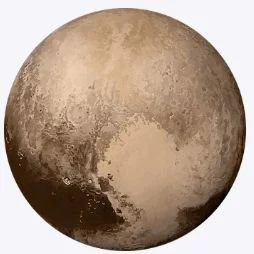Our solar system recognizes various kinds of outer space objects. Objects that are studied by observing. One of the objects in our solar system that has been studied by scientists is planets.
Pluto is not a planet
The planets in this solar system are not just Earth. Initially there were nine planets in our solar system.
It consists of the planets Mercury, Venus, Earth, Mars, Jupiter, Saturn, Uranus, Neptune, and Pluto. Later the name Planet Pluto was removed from the list of names of planets in our solar system.
It seems strange, Planet Pluto, which has been included in the planet category for a long time, has suddenly been deleted and is no longer considered to have the criteria as a planet.
The reason is that the size and content of Planet Pluto can no longer be categorized as a planet. Planet Pluto, which has held the title of planet for 76 years, suddenly changed its status to a dwarf planet, dwarf planet or Kuiper Belt.
The Kuiper Belt itself is a space object similar to the asteroid belt. The Kuiper Belt is much larger than the asteroid belt itself. The difference between the asteroid belt and the Kuiper Belt is that the content contained in the asteroid belt is in the form of rocks and metals, while the content contained in the Kuiper Belt is ice, methane, ammonia, and water.
Inside the Kuiper Belt there are three planets, which are called dwarf planets or dwarf planets. The three dwarf planets are Ceres, Haumea, Makemake, Eris, and Pluto. Dwarf planets or dwarf planets have the following characteristics.
Like other planets, dwarf planets also orbit the sun. The sun is the center of gravity of the planets, including the dwarf planets.
Dwarf planets have sufficient mass, so dwarf planets also have their own gravitational force. The gravitational force serves to withstand the pressure of other planetary objects that are larger. The gravitational force possessed by a dwarf planet makes it have a nearly spherical shape or hydrostatic equilibrium.
Dwarf planets make no space for other celestial bodies for larger celestial bodies. Dwarf planets only provide the area around their orbits for their own satellites.
Dwarf planets do not act as satellites of any planet or other non-star objects in outer space.
Pluto Was a Planet
Although now it is no longer categorized as a planet, Pluto in the past was an outer space object that was once categorized as a planet. For 76 years, Planet Pluto occupied the position as the farthest and smallest planet from the solar system.
The planet Pluto was discovered by a young astronaut named Clyde William Tombaugh. The young astronaut first discovered the Planet Pluto on February 18, 1930. The distance between Pluto and the sun is 5906 million km.
As a celestial body, Planet Pluto has a diameter of 4,862 km. It took Pluto 248.4 years to orbit the sun or evolve. Meanwhile, to rotate, Planet Pluto takes 6.39 days.
The planet Pluto has an atmosphere consisting of methane and has a very low temperature. Pluto has a temperature of -233° Celsius. Such minus temperatures make most of Pluto's surface composed of ice.
The discovery of the Planet Pluto almost coincided with the creation of the Walt Disney cartoon character, Pluto. A cute yellow dog. The assumption that the name of this planet was inspired by a cartoon character cannot be avoided.
By its discoverer, Clyde, Pluto was actually taken from the name of a Roman god who ruled over the underworld. The dark planet Pluto is then identified with dark death. From its initial discovery until it was finally decided that it was no longer categorized as a planet, Pluto still has many unsolved mysteries.

